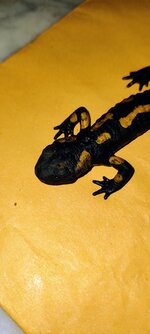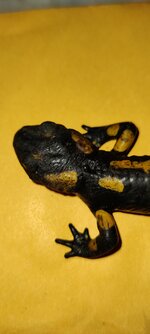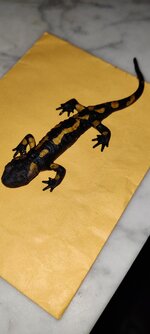Pentothal
New member
Hi all,
thanks for the excellent forum . One of my fire salamander looks really sick. Any idea about it? Is it a fungus? Please help me out..... I attach some pics taken yesterday.
. One of my fire salamander looks really sick. Any idea about it? Is it a fungus? Please help me out..... I attach some pics taken yesterday.
Thanks in advance
thanks for the excellent forum
Thanks in advance



